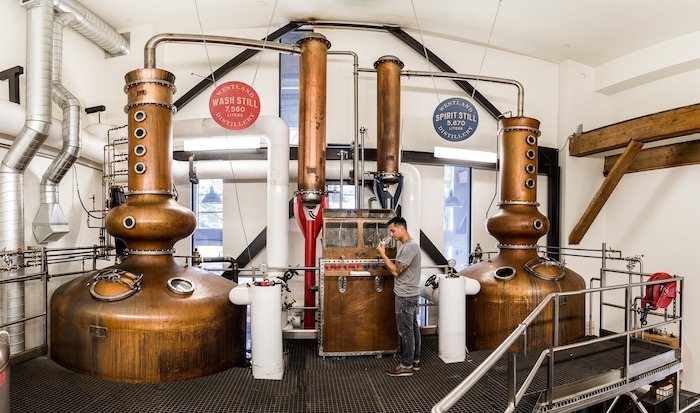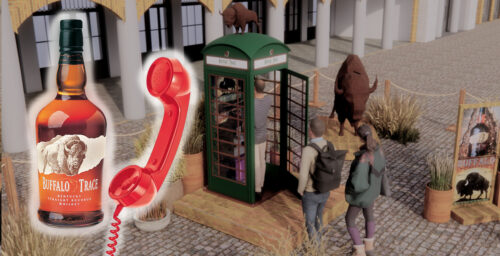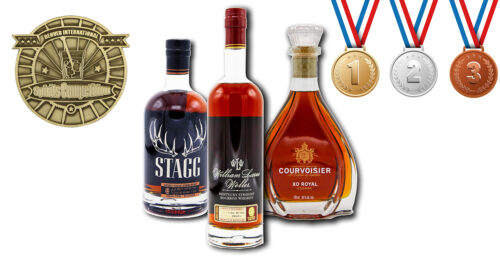Westland Whiskey’s managing director and co-founder, Matthew Hofmann, is off into the horizon, and succession for the single malt producer is at hand.
The Seattle, Washington-based pioneer of American single malt marches on, the team having their bases covered.
To fill Hofmann’s shoes, Tyler Pederson is the distillery manager. He recently garnered honors at the 2023 Icons of Whisky Awards. A member of Westland’s team since 2013, when he started at the distillery’s mash tun, Pederson said he likes his music loud, his whiskey at cask strength, and when he’s not overseeing the stills at Westland, he likes the snow deep and steep.
Shane Armstrong, in the role of blender at Westland, meanwhile described his path from a childhood in Massachusetts to whiskey blending in Seattle as winding. He was educated in Vermont, worked in everything from wire and cable to herpetology, before joining the team at Westland in 2012.
As a member of the team since its earliest days, Armstrong’s been involved in every aspect of Westland’s growth, from the wort to the fermentation vessels in Seattle’s South Park neighborhood, to helping build the actual distillery in the SODO district.
Hofmann and the succession team at Westland recently visited with The Whiskey Wash about the co-founder’s departure and the succession, as well as where the whiskey makers go from here.

The Whiskey Wash: If you had to sum up the formative years at Westland in one paragraph, what would it be?
Matt Hofmann, co-founder: “I would say the formative years at Westland have been an unbelievable ride, and I’m so fortunate to have been able to live this dream come true! We started with a kernel of an idea and of course there were dreams of what the future might look like. None of them came anywhere close to the lived reality. In a good way!”
“We set out to explore possibilities in single malt, starting with using roasted malts and brewer’s yeast strains that others had never used before, but the exploration continued from there and never really stopped. That sense of exploration brought us to using Garry oak, something experimented with by only one distillery before us, utilizing never before seen barley varieties, and pioneering the use of American peat in malting, in addition to developing and leading an entirely new category of whiskey in American Single Malt! It’s been an extraordinary 13 years and I’m just so thankful for everyone who’s been a part of that journey to make it all possible.”
TWW: Succession is a big word on the lips of many in the country, from politics to TV to the whiskey industry. What is the key strategy for succession at Westland?
Matt Hofmann: “Regarding succession, we’re in a place that I’m very comfortable with, and so should all of Westland’s fans around the world. The important thing to remember is that whiskey-making is a team endeavor, and it’s high time anyway for the rest of the world to get to know the amazing people within Westland that are the ones truly responsible for our excellent liquid.”
“While I started solely in production as master distiller in 2010, I began to absorb more responsibilities within the company in 2015, finally culminating in running the whole thing as managing director several years ago. It is pretty rare to see people with production backgrounds being in this kind of position and for sure I couldn’t keep my nose out of the whiskey completely!”
“But the reality is that we’ve got a great team who have pushed the whiskey ball further forward than I could have possibly imagined. Our master blender, Shane Armstrong, has been responsible for conceiving and final execution of releases going back to Garryana 1.”
“Our distillery manager, Tyler Pederson, fresh off a “2023 Global Distillery Manager of the Year” Icons of Whisky award to boot, has conceived and led several cutting-edge sustainability projects and pushed our industry-leading barley sourcing program to places I don’t think anyone else in the world can match.”
“There are innumerable other examples I could list for these guys, as well as the rest of the team, some of them really exciting to outsiders and some of them a little more procedural and mechanical, but all of them are important and led to our reputation that we have today. I may be biased but I think we have the greatest team in the business, and I’m excited to now just be a spectator and be a fan of them like everyone else.”
TWW: What are some of the key points you’ve learned coming up as distillery manager for Westland?
Tyler Pederson, distillery manager: “I think the key pillars of this role are patience and adaptability. Most people are familiar with the timelines involved with whiskey maturation, but the agricultural system that delivered the grain to the distillery is a mystery to most. If I wanted to call up the region’s largest malthouse and put in a large order for locally grown 2-row pale malted barley, I would likely have to contract that out a year in advance. The grain itself would have taken five months to grow, which would have been preceded by 10 years of development in a traditional breeding program. Since we are so committed to facilitating the development of new barley varieties and the supply chains that deliver them, I find myself in the middle of a roughly 20-year timeline of planning and product development. “
“Of course, as an agricultural product, barley is subject to changes in the environment. This means that things like drought can significantly affect grain and spirit quality, so we have to find ways to optimize the raw material while still allowing the flavor of the grain to shine through. Being patient and learning to adapt to the ever-changing situation are two of the most critical aspects of making whiskey.”
TWW: What are some of your pet projects or key innovations you want to bring to the forefront for Westland?
Tyler Pederson: “I’m really excited about some of the projects that we are working with for Colere. We are looking at what can be done to shorten the timeline of developing new barley varietals, and I think we found a compelling way to do it. By trying to redefine what “malt quality” barley means, we allow ourselves to explore options in agriculture that provide a greater return for all of the stakeholders while creating flavorful whiskies that are resilient to the risks of climate change.”
“We want to essentially develop modern land-race populations of barley that have non-homogeneous genetics. This allows farmers the benefit of increased yields and resistance to the threats of pests, disease, and climate change while allowing us to explore the flavor possibilities of distilling batches of malt that have a spectrum of malt modification. Our initial trials into the concept have been surprisingly successful.”
TWW: How has Westland been the pioneer of the American single malt category and what does that mean for whiskey drinkers across the U.S.?
Shane Armstrong, master blender: “Westland’s part in the American Single Malt category has been to link past possibilities with the present. Our distillation process is largely traditional, but our tie to locality and progress branch beyond convention. We focus on barleys grown in the Pacific Northwest and feature some casks coopered from a native oak species (Quercus garryana). Our flagship whiskey covers a lot of ground; tying a roasted malt profile to new oak while subtle peat and Sherry nod to the single malt cannon. For whiskey drinkers, our range spans from nuanced elements of barley malt (Colere) and local peat (Solum) to the darker complexities of Flagship and Garryana.”
TWW: How do you plan to keep the current vision of Westland alive going forward?
Tyler Pederson: “There is no risk to the vision or direction of Westland; our core team is still making the whiskey. Shane, Scott Sell (our rackhouse and farm manager), and myself have been with Westland for over a decade, and our alignment on the vision of Westland and the dedication to spirit quality is unwavering. We’ve been putting away a lot of cool projects in the rackhouse, and we are really excited for the opportunity to share them in the coming years.”
Shane Armstrong: “The vision of Westland has been, and will continue to be, driven by those who work here. We are not and have never been a singular voice. I plan to persist in my effort to make every whiskey better than the last.”
TWW: You have a new product, the 3rd Colere. What is the overarching story with this new expression?
Shane Armstrong: “This new expression, like the previous two, is driven by a barley variety grown and malted outside of the larger commodity system. Specifically, the variety was pilot grown in the Skagit Valley in 2016. Where this edition departs is the use of a single Oloroso hogshead, which completed the palate without encroaching on the barley-driven profile.”








